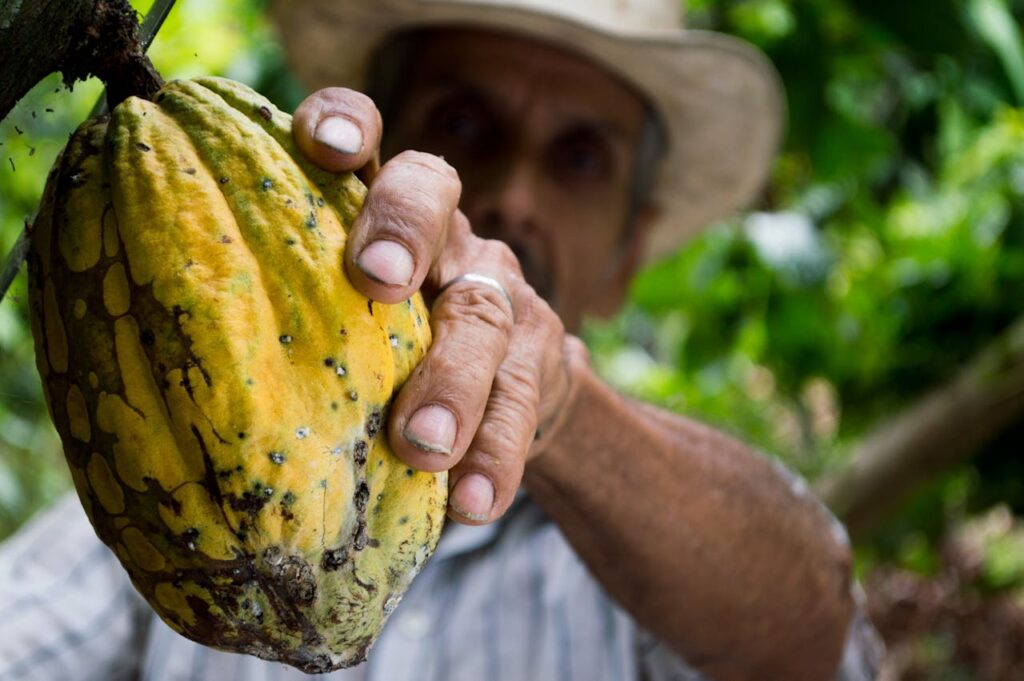If you haven’t seen a good uptrend recently, let me show you one: Cocoa. Cocoa’s price has surged from under $3,000 to $8,000 because of supply fears.
Cocoa’s price surge
Cocoa is a valued ingredient used to make chocolate products. The powder is obtained from cacao trees (via beans). Due to its lovely nutritional content, cacao is called the ‘food of the gods’ by the Spanish.
Four major West African countries – Ivory Coast, Ghana, Nigeria and Cameroon – produce the bulk of cocoa. The percentage we’re talking here is about 75 percent; hence, a major concentration of supply. Due to bad weather, disease, falling long-term supply and rising demand (possibly derived the new Willy Wonka movie), Cocoa’s supply-demand equation has tiled into a severe imbalance.
Since the start of this year, Cocoa prices have leaped by more than 100 percent. In fact, for the last 18 months every price dip was quickly bought into. This created one of the most stable uptrends in the commodity market.
Can the rally last? Against Cocoa’s uber-bullish sentiment, the risk here is obviously skewed to the upside. A leap into the five-digit territory (10,000) is possible. That said, a correction can not be ruled out either, simply because the market is pricing in a supply disaster. This armageddon scenario may not persist since supply will eventually catch up due to high prices.
Whatever the outcome, I suggest that it is about time to stock up your favourite Easter (and Christmas) chocolates!

Has inflation stopped falling?
Today the Office of National Statistics (ONS) released the inflation rate for February. The Consumer Prices Index (CPI) came in at a decent 3.4 percent – a steep drop from those double-digit levels 18 months ago. Bearing in mind that we’re in an election year, the Chancellor of the Exchequer immediately claimed “what you can see is the difficult decisions the government has taken over the last year are paying off.”
So, has inflation actually increased the purchasing power of most households? Yes and no. On the bright side, goods prices are not surging as fast as before. In January, for example, the same inflation rate was at 4.0 percent. The direction appears to be heading south and into the central bank’s 2 percent preferred target.
However, if you ask any homeowner whether they feel ‘wealthier’ I doubt you’d find many affirmative nods. Fuel prices, insurance premiums, council taxes, mortgage rates are all heading north, rather than south. The average fuel prices, for example, remain significantly higher (unleaded petrol at 144p) than the level recorded back in 2020.
UK rental costs, as reported today by the Financial Times (paywall), ‘rose at a record pace’ to 9 percent. Bear in mind this figure is more than double that of the ONS inflation rate.
Therefore, I suspect the underlying inflation rate in the country is stickier than expected. This could limit the downside leeway for interest rates.

Source: BBC

Jackson is a core part of the editorial team at GoodMoneyGuide.com.
With over 15 years of industry experience as a financial analyst, he brings a wealth of knowledge and expertise to our content and readers.
Previously, Jackson was the director of Stockcube Research as Head of Investors Intelligence. This pivotal role involved providing market timing advice and research to some of the world’s largest institutions and hedge funds.
Jackson brings a huge amount of expertise in areas as diverse as global macroeconomic investment strategy, statistical backtesting, asset allocation, and cross-asset research.
Jackson has a PhD in Finance from Durham University and has authored over 200 guides for GoodMoneyGuide.com.
To contact Jackson, please ask a question in our financial discussion forum.

